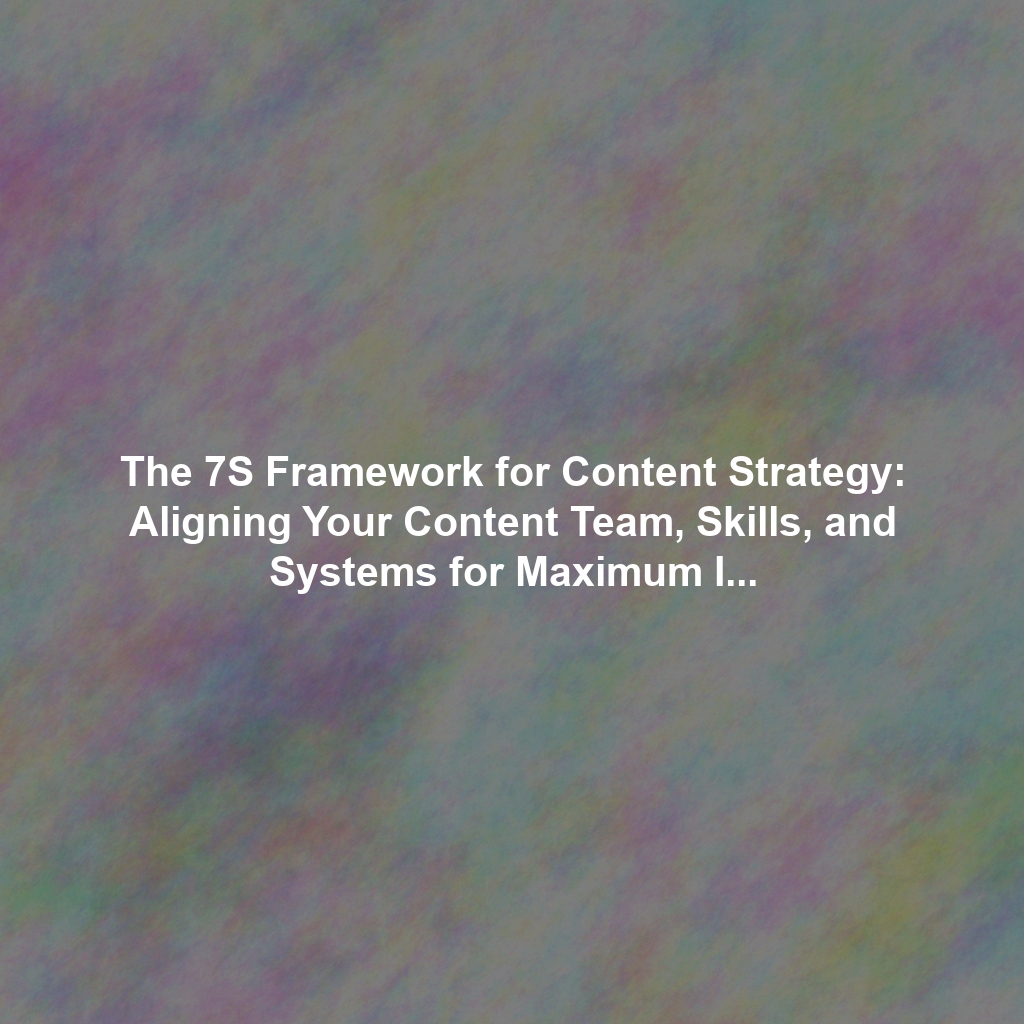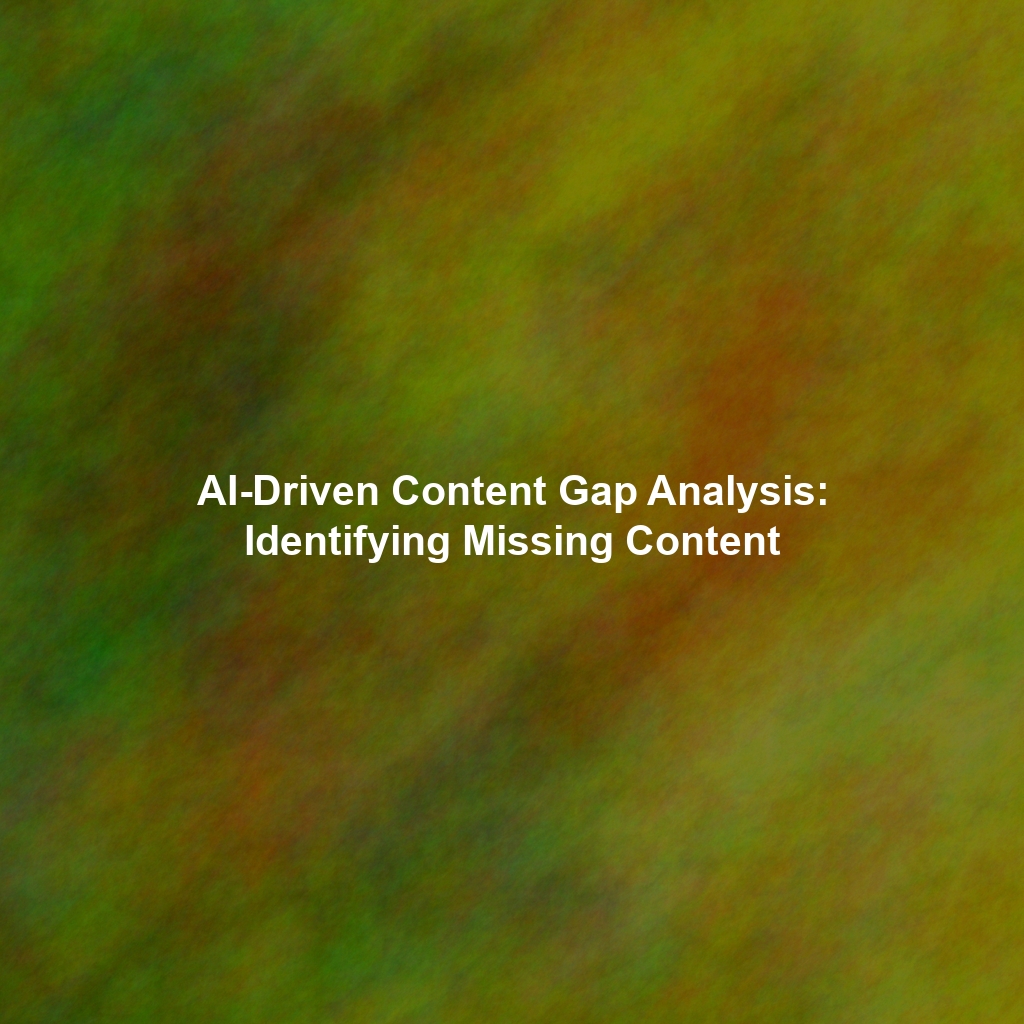In today’s competitive digital landscape, content is king. But even the most brilliant content ideas can fall flat if they aren’t supported by a robust and aligned content strategy. Just as businesses use frameworks like McKinsey’s 7S model to optimize their operations, content leaders can adapt this powerful tool to ensure their content initiatives are firing on all cylinders. This article explores how to apply the 7S framework – Strategy, Structure, Systems, Shared Values, Skills, Style, and Staff – to unlock maximum impact from your content efforts.
The McKinsey Approach: Content Strategy as a Business Imperative
The McKinsey approach to problem-solving emphasizes data-driven decision-making, structured thinking, and a focus on outcomes. Applying this to content means moving beyond simply creating “good content” and instead, treating content as a strategic asset that directly contributes to business goals. Frameworks, like the 7S, provide a structured approach to ensure that content strategy is not just a creative endeavor, but a well-oiled machine aligned with overall organizational objectives.
Deconstructing the 7S Framework for Content Excellence
The 7S framework, originally developed by McKinsey consultants Tom Peters and Robert Waterman, highlights seven internal elements of an organization that need to be aligned to achieve success. Let’s see how each ‘S’ translates to the world of content strategy:
1. Strategy: The Content North Star
Your content strategy is the bedrock of everything you do. It defines your content’s purpose, target audience, key themes, and measurable objectives. Without a clear strategy, your content efforts will lack direction and focus.
Example: A SaaS company aiming to increase trial sign-ups might define its content strategy around providing valuable, educational resources that address pain points related to their software. The key themes might revolve around productivity, efficiency, and cost savings. The primary metric would be the number of trial sign-ups originating from content assets like blog posts, ebooks, and webinars.
2. Structure: Organizing for Content Success
Structure refers to how your content team is organized and the reporting lines within it. A well-defined structure ensures clear roles, responsibilities, and accountability.
Example: A large organization might have a centralized content team, while a smaller company might opt for a decentralized model with content creators embedded within different departments (e.g., marketing, sales, customer support). Regardless of the structure, clear lines of communication and collaboration are essential. Defining roles such as Content Strategist, Content Writer, Editor, and SEO Specialist is crucial.
3. Systems: The Content Workflow Engine
Systems encompass the processes and tools used to manage the entire content lifecycle, from ideation and creation to publishing and promotion. Efficient systems are crucial for streamlining workflows and maximizing productivity.
Example: Implementing a Content Management System (CMS) like WordPress, coupled with project management software like Asana or Trello, can streamline content creation and approval processes. Using SEO tools like Semrush or Ahrefs for keyword research and performance tracking is also part of a robust content system.
4. Shared Values: The Content Culture
Shared values represent the core beliefs and principles that guide your content team’s work. These values shape the tone, style, and overall quality of your content.
Example: If a company values transparency and authenticity, its content should be honest, unbiased, and provide real value to the audience. If a company prides itself on innovation, its content should explore new ideas and challenge conventional thinking. A shared value of “customer-centricity” will result in content that prioritizes the audience’s needs and interests.
5. Skills: Equipping Your Content Team
Skills refer to the knowledge, abilities, and expertise of your content team members. Identifying skill gaps and providing training opportunities are essential for maintaining a high-performing team.
Example: Investing in training for content writers on SEO best practices, storytelling techniques, and data analysis can significantly improve the quality and effectiveness of your content. Providing editors with training on grammar, style, and brand voice ensures consistency and professionalism. Keeping up-to-date with AI writing tools, and how to leverage them appropriately is becoming increasingly important.
6. Style: The Content Personality
Style encompasses the overall tone, voice, and visual presentation of your content. A consistent and engaging style helps build brand recognition and fosters a stronger connection with your audience.
Example: Defining a clear brand voice (e.g., friendly, authoritative, humorous) and sticking to it across all content channels is crucial. Developing a style guide that outlines specific guidelines for writing, formatting, and visual design ensures consistency and reinforces brand identity.
7. Staff: The Content Champions
Staff refers to the people who create, manage, and promote your content. Attracting and retaining talented content professionals is critical for building a successful content program.
Example: Investing in employee development, offering competitive compensation, and fostering a positive and collaborative work environment can help attract and retain top content talent. Providing opportunities for growth and advancement can also motivate staff to perform at their best. Recognize and reward high-performing individuals and teams.
Putting it All Together: Achieving Content Alignment
The true power of the 7S framework lies in its ability to highlight areas of misalignment. By systematically evaluating each ‘S’ and identifying gaps, content leaders can develop a targeted action plan to improve content performance and achieve strategic objectives. For example, if website traffic is low (a problem stemming from your Strategy), it might be due to a lack of SEO Skills within the team, outdated Systems for content promotion, or a Structure that doesn’t prioritize SEO. Addressing these interconnected issues will yield far better results than simply publishing more content.
Conclusion: The 7S Framework – Your Blueprint for Content Success
The 7S framework provides a valuable lens through which to examine your content strategy and identify areas for improvement. By aligning your strategy, structure, systems, shared values, skills, style, and staff, you can create a powerful content engine that drives engagement, generates leads, and achieves your business goals. Embrace the McKinsey approach – structured thinking, data-driven decisions, and a relentless focus on outcomes – to unlock the full potential of your content efforts.
 Skip to content
Skip to content

